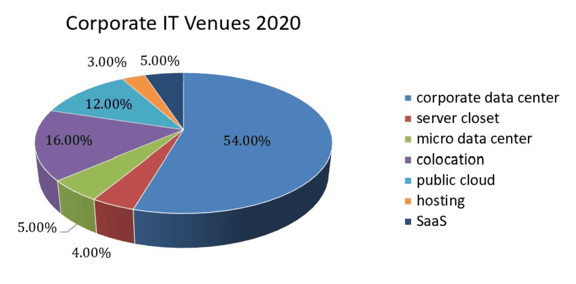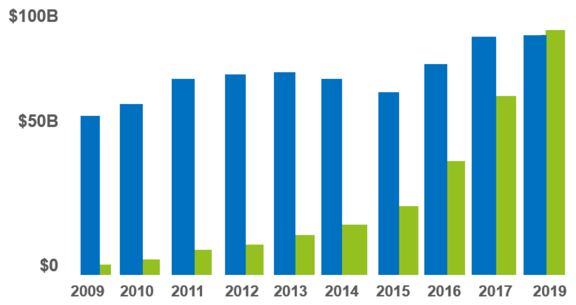The Uptime Institute recently revealed the results from their global survey of IT and data center managers. If you only pay attention to industry and media hype, you will be surprised by the results. If you work and speak with data center and IT leaders every day, the results will be consistent with what you hear from your customers. There has not been a massive rise in public cloud adoption, and most IT environments are still under enterprise control.

The summation of the results for corporate data centers, server closets, micro data centers, and colocation indicates that 79% of IT environments remain in enterprise-controlled data center environments. The report on this data from the Uptime Institute predicts that the enterprise data center “will be the foundation for corporate IT for the next decade.” This stands in stark contrast to the predictions of analysts like Gartner, who, as recently as 2018, proclaimed the death of the on-premise data center.
There are several reasons for the continued strength of the enterprise data center, but the primary one is risk aversion. According to the Uptime Institute, “Most people aren’t real comfortable (with public cloud). Enterprises are taking it carefully as it is a big undertaking to move.” Respondents commented that when there is an outage, and the IT organization is held responsible regardless of if that outage was due to a public cloud provider’s service disruption. Because of this, many owners choose to maintain control over critical systems. Ownership of your data center enables full visibility into the IT environment and the ability to adjust the risk profile as necessary.
The perception of rapid public cloud utilization is so strong that some may believe these survey results were skewed or in error. However, if you analyze other industry data, the story is consistent.
In 2019, Synergy Research analyzed IT spending over the past decade. They found an increase in public cloud adoption from $0 in 2009 to $100B in 2019. Interestingly, enterprise data center spending over the same period was flat. Most expect that an increase in investment in public cloud would lead to a decrease in investment in enterprise data centers, but the data shows that is not accurate:

Also, multiple studies showed that a high percentage of companies were repatriating public cloud workloads (bringing workloads back to on-premise environments):

This is not to say that there is no value in public cloud services. There is. But as the demands on enterprise IT increase and become more dynamic through the adoption of IoT devices, there is a risk in a ‘cloud-first’ methodology. “Cloud First” should be replaced with “Customer First,” empowering IT organizations to locate workloads on-premise, in the cloud, or at the edge based on how they can best deliver services to their users. The on-premise data center remains a critical part of that strategy, and the survey data demonstrates the universal need for a balance between on-premise, cloud, and edge environments.